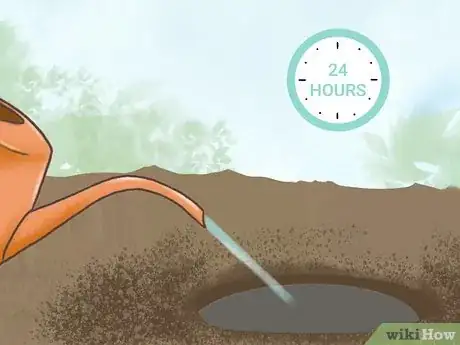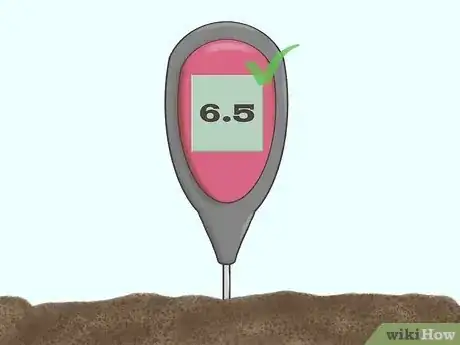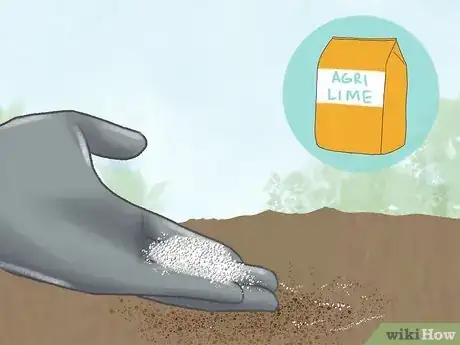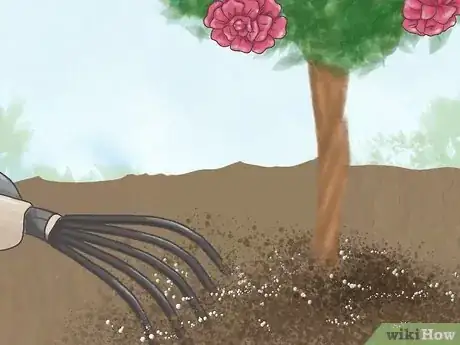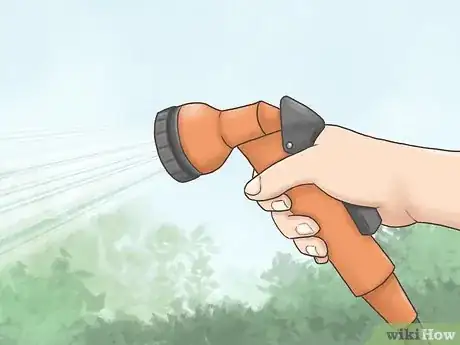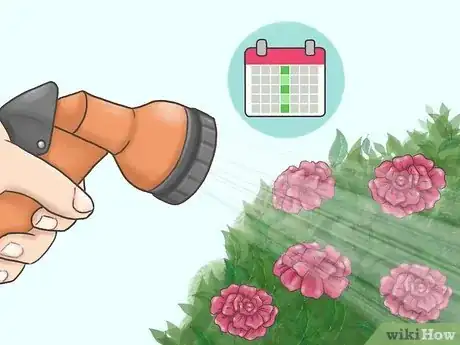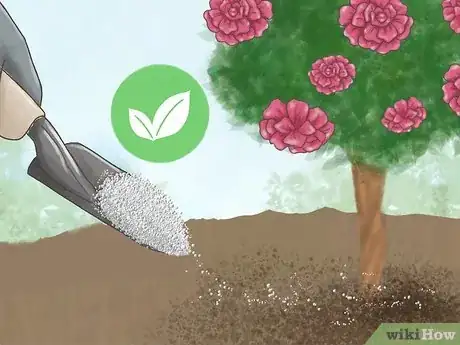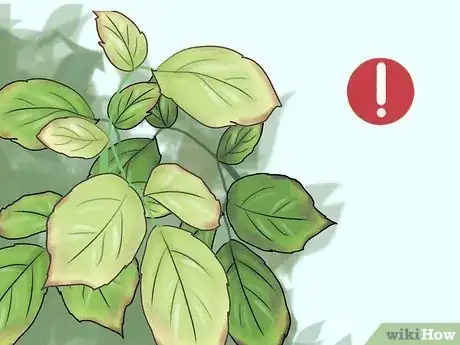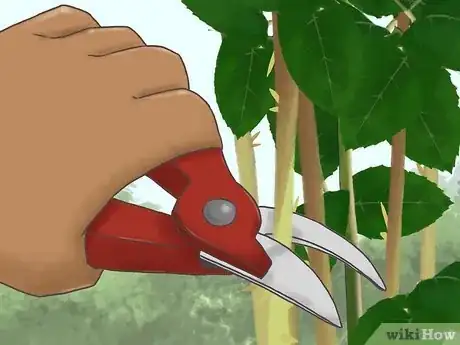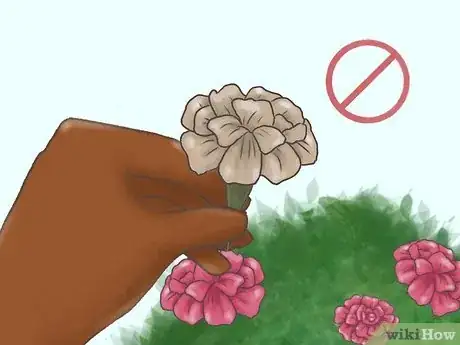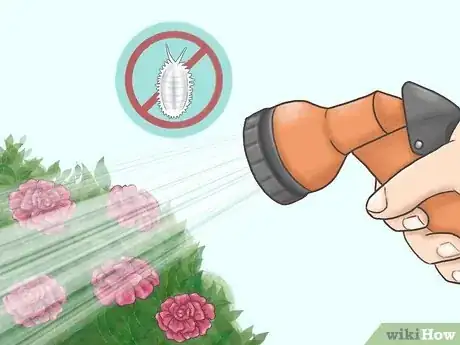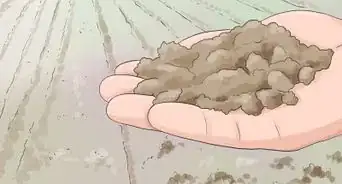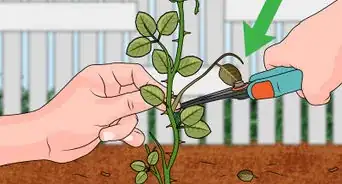wikiHow is a “wiki,” similar to Wikipedia, which means that many of our articles are co-written by multiple authors. To create this article, volunteer authors worked to edit and improve it over time.
There are 7 references cited in this article, which can be found at the bottom of the page.
wikiHow marks an article as reader-approved once it receives enough positive feedback. In this case, several readers have written to tell us that this article was helpful to them, earning it our reader-approved status.
This article has been viewed 55,525 times.
Learn more...
Knock Out® roses (Rosa “Knock Out”) are the shrub roses for gardeners who want to grow roses but do not have time for all the fuss that ordinary roses require. They are hardy in USDA Hardiness Zones 4 to 10, which means that they can survive temperatures that dip down to -25 degrees F (-34.4 degrees C).[1] These plants will thrive in partial shade with as little as three hours of direct sunlight, are drought tolerant, resistant to mildew and black spot disease and do not need to be deadheaded. Even though they are one of the easiest rose hybrids to grow, they still have some basic care requirements.
Steps
Getting Your Roses the Sun and Soil They Need
-
1Choose a location for the Knock Out rose that gets at least three hours of direct sunlight each day. While these roses are not picky, they do need sunlight to stay healthy.
-
2Check to see if your soil drains quickly. You can do this by digging an 18-inch deep hole and filling it with water. Check the hole after 24 hours.
- If there is still water in it, find a planting site with better drainage or build a 1 to 1 1/2-foot high raised bed and plant the Knock Out rose there.
Advertisement -
3Test the soil pH. Knock Out roses grow best in soil with a pH of 6 to 6.5.[2] Soil test kits are generally available at garden centers. Take the soil test sample from 4 inches deep and do not touch it with your hands. If you do touch it, your skin could change the pH of the sample.
- Let the sample dry, break it up into fine pieces, place it in the pH test chamber and add distilled water along with the test chemical.
- Shake it up and check the color of the water against the color chart provided with the kit.
-
4Mix lime into the soil to raise the pH or add aluminum sulfate to lower the pH. The amount of lime or aluminum sulfate required depends on the soil type. Sandy soil will require about 12 ounces of lime to raise the pH of 25 square feet of soil from 5.5 to 6 or about 2 ounces of aluminum sulfate to change the pH from 7 to 6.5.
- More lime or aluminum sulfate must be used to change the pH of loamy or clay soil. Sprinkle the aluminum sulfate or lime evenly over the soil and mix it in thoroughly with a tiller before planting the rose.
-
5Troubleshoot if you need to change the pH when your plant is already in the ground. If the rose has already been planted but the pH needs to be changed, mix the aluminum sulfate or lime into the top 2 inches of soil with a dirt rake or hand rake. Spread it all the way around the rose in an area that extends 3 feet away from the base of the shrub.
- If the soil pH is too high, the rose may develop chlorosis which causes the leaves to turn yellow.[3]
Planting and Watering Your Knockout Roses
-
1Plant your rose at least 3 feet away from nearby buildings or other plants. This is to ensure that your plant gets plenty of air circulation. Increased air circulation will make it even more difficult for fungal and bacterial diseases attack the rose.
-
2Give your young plant plenty of water. Water it generously immediately after planting and whenever the top of the soil begins to dry for the first two years. They can be watered slowly with a soaker hose or simply with a garden hose with the water turned down to a slow or medium pressure. Giving them water more slowly allows it to soak into the ground around the rose rather than running off into the surrounding area.
-
3Consider using a watering can. These roses can also be watered with a watering can. Just pour the water slowly so it can soak in right where the rose needs it. Distribute the water over the soil around the rose and extending out about 1 foot beyond the outer edge of the branches.
- The root system will extend out into this area as the shrub grows.[4]
-
4Water your rose less as it ages. After the first two years, it will survive long periods without water but it will wilt and the leaves will turn yellow. Water it once every week or two during dry spells to keep it looking its best.
- If it is being watered too much, the leaves will turn yellow and drop.
- Spread a 2- to 3-inch depth of organic mulch like shredded pine bark around the rose to help conserve moisture.
Feeding and Pruning Your Roses
-
1Give your Knock Out rose fertilizer in the spring when it begins to put on new leaves. Use a fertilizer designed for roses with a 5-10-5 or 4-8-4 ratio.[5] .
- Spread 1/4 to 1/2 cup of fertilizer over the soil around the rose just before watering it.
-
2Fertilize at several different times throughout the growing season. Give your plant another dose of fertilizer when the new flower buds appear and again at about the middle of summer.
- Do not give Knock Out roses any fertilizer after the middle of summer as it will produce lots of new, lush stems that will not mature in time to withstand the cold winter weather.
- Even in mild-winter climates, they should not be given fertilizer in late summer or fall so they can still have a bit of a dormant season to rest up for spring.
-
3Watch for signs that your rose is getting too much or too little fertilizer. If the Knock Out rose does not get enough fertilizer, it will grow slowly, bloom less and the leaves may become pale.
- Too much fertilizer may cause the edges of the leaves to turn brown.
-
4Prune the Knock Out rose only lightly in late winter or very early spring. Use sharp bypass-type hand pruners to remove dead or damaged stems completely at any time of the year.
- Cut out any stems that are growing across other stems as they will rub when the wind blows and damage each other.
- After the rose is a few years old, trim each stem back by one-half to one-third their height. #Hold the pruning shear correctly. Make the pruning cuts at a 45-degree angle about 1/4-inch above a growth bud which is a small, raised area of plant tissue on the stem, usually right where a leaf with five leaflets is growing.
- New stems will grow from the growth bud just below the pruning cut.
-
5Do not pick off your rose’s dead blooms. Deadheading, the process of removing faded blooms, is not required with these roses. They will drop their blooms to the ground as they fade. Rake up and remove any trimmings after pruning the rose. The dead flowers should be raked up and removed every few weeks as well.
- When left in the garden, dead flowers and trimmings provide an environment for bacterial and fungal infections.[6] These rose shrubs are resistant to such diseases but other nearby plants may not be. The other plants will be less likely to contract these diseases and the garden will look nicer when it is cleaned up.
Fighting Off Pests
-
1Look for signs that your rose is being attacked. Check the Knock Out rose for pests like aphids, mealybugs, scales and spider mites a couple times each month. Knock Out roses are rarely bothered by them but they may do some damage. One tell-tale sign that these pests are making a meal out of a Knock Out rose is a sticky clear liquid called honeydew that they often secrete on the rose leaves while they are feeding.
- Look under the leaves and along the stems for the pests.
-
2Recognize different pests. Aphids are small, oval insects that are usually green or red but can be nearly any color.
- Mealybugs and scales are flat, oval insects that attach themselves to the leaves or stems and rarely move.
- Spider mites are very tiny pests that are usually first noticed when they spin a very fine web between the leaves or branches.
-
3Control pests as they appear. If these pests are detected, spray the Knock Out rose thoroughly with a strong spray from the garden hose in the morning to knock the pests off and wash off the honeydew.
- Aphids usually can’t get back on the shrub and spider mites hate moisture.[7] The rose may need to be sprayed once or twice each week to keep the pests under control.
-
4Rub away pests. Mealybugs and scales can be rubbed off with a thumbnail or a cotton ball soaked in Isopropyl rubbing alcohol.
Community Q&A
-
QuestionMy knockout rose plant had turned brown, so I planted it. Will it live or is it already dead?
 Community AnswerKnockout roses can sometimes be complicated. It depends highly on where you live and the climate in that area. Water the plant regularly and use a fertilizer as necessary, and observe whether the plant recovers. If not, you may have to do some more research or plant a new one.
Community AnswerKnockout roses can sometimes be complicated. It depends highly on where you live and the climate in that area. Water the plant regularly and use a fertilizer as necessary, and observe whether the plant recovers. If not, you may have to do some more research or plant a new one.
References
- ↑ http://nassau.ifas.ufl.edu/horticulture/demogarden/plants/knocckoutdouble.html
- ↑ http://gardeningsolutions.ifas.ufl.edu/giam/plants_and_grasses/flowering_plants/knockout.html
- ↑ http://www.missouribotanicalgarden.org/gardens-gardening/your-garden/help-for-the-home-gardener/advice-tips-resources/pests-and-problems/environmental/iron-chlorosis.aspx
- ↑ http://gardeningsolutions.ifas.ufl.edu/giam/plants_and_grasses/flowering_plants/knockout.html
- ↑ http://www.missouribotanicalgarden.org/gardens-gardening/your-garden/help-for-the-home-gardener/advice-tips-resources/gardening-help-faqs.aspx?questionid=198&afmid=4462
- ↑ http://www.missouribotanicalgarden.org/gardens-gardening/your-garden/help-for-the-home-gardener/advice-tips-resources/pests-and-problems/diseases/rusts.aspx
- ↑ http://www.missouribotanicalgarden.org/gardens-gardening/your-garden/help-for-the-home-gardener/advice-tips-resources/pests-and-problems/insects/mites/spider-mites-outdoors.aspx
- ↑ http://nassau.ifas.ufl.edu/horticulture/demogarden/plants/knockoutpink.html
About This Article
Knock Out roses are an easy-to-grow alternative to traditional roses that can survive in extreme temperatures. Plant them somewhere they’ll receive at least 3 hours of sunlight a day and in well-draining soil. You should also plant them 3 feet away from other plants or buildings to improve the air circulation and prevent infections. Water your roses generously as soon as you plant them and whenever the topsoil starts to get dry for the first 2 years. Apply a rose fertilizer when they grow flowers in the Spring and a few times throughout the growing season. For more Gardening tips, including how to prune your Knock Out roses, read on!

